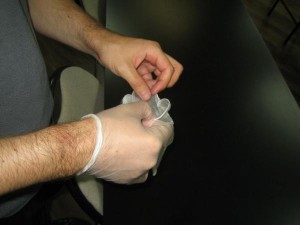Wheat allergy refers to the irregular behavior of the body’s immune system caused by protein found in the wheat grain.
Wheat allergy is one of the most common food allergies among children, but it can also affect adults. Most children tend to outgrow their allergy to wheat. The signs and symptoms of wheat allergies may vary from people to people. Wheat allergies are usually non-life-threatening, but in some cases, anaphylaxis, an allergic response, might occur which can be life-threatening.
What Causes Wheat Allergy?
The body’s immune system is designed to protect the body from foreign bodies and pathogens, such as bacteria and viruses. An allergic reaction takes place when the immune system attacks a mistaken normal or good substance for a pathogen. In the case of a wheat allergy, the immune system attacks wheat proteins as if they were a disease. Albumin, globulin, gliadin and gluten are the proteins found in wheat that may cause an allergic response. People can be allergic to one or more of them.
For people with wheat allergy avoiding the intake of wheat may be a little hard, as wheat can be found in a variety of forms in different kinds of food and beverages. Examples are such as doughnuts, dumplings, ice-cream cones, and malted milk.
Risk Factors for Wheat Allergy
A risk factor is an agent which increases the chances of developing a condition.
The family’s background may increase the risk of allergic occurrence. If a close relative such as a parent sibling has an allergy, the chances of developing wheat allergy may increase.
The age of a person can also increase the risks of developing allergies. Infants and toddlers have higher chances of developing wheat allergic, but they can be outgrown with age in most cases.
Wheat Allergy Signs and Symptoms
Symptoms are something the patients go through themselves, while a sign is something others can detect. Some of the signs and symptoms are asthma, diarrhea, mouth irritation, swelling, nausea, and rashes.
Signs and symptoms of anaphylaxis are chest pain, chest tightness, weak pulse, throat swells and tightens and severe breathing difficulties. It is important to seek help immediately if you come face to face with any of the symptoms of anaphylaxis as this is a medical emergency.
If you or your child experience any signs or symptoms of wheat allergy or other 
In some rare cases, your doctor might prescribe the use of epinephrine during an attack. This usually comes in the form of an injection which should be brought along with you to be administered in a case of an emergency.
Wheat Allergy Treatment and Prevention
The best treatment is of course prevention. It may not sound as easy as it seems to avoid wheat products as they are found in almost all food. Spending some time reading the labels can help a lot when it comes to avoiding wheat based products.
Antihistamines are used to relief discomfort. They are not meant to prevent allergic reactions.
Epinephrine is an emergency treatment for anaphylaxis, where you will be injected with epinephrine shots. Even after the shot, you should still consult an expert for further actions to prevent complications of wheat allergy.
